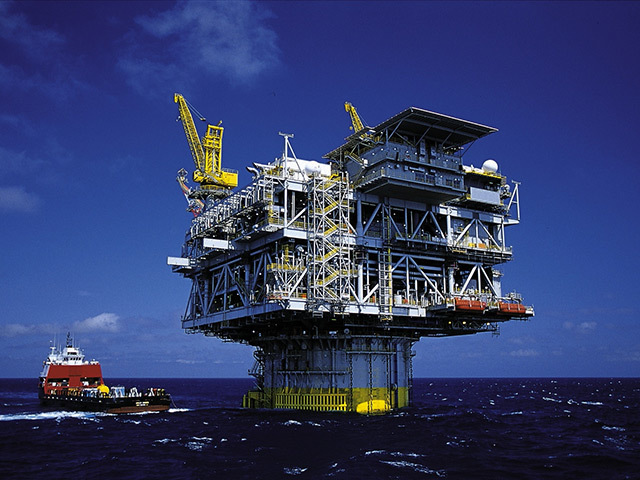
Decades of financial discipline that honed Exxon Mobil Corp. into the leanest, most-efficient oil company in the world are paying off as it navigates the worst market slump since the 1980s.
As industry job cuts top 200,000 worldwide, Exxon has kept its 75,300-strong workforce intact with none of the sweeping layoffs seen at other oil companies, including its biggest U.S. rival Chevron Corp.
“Exxon is just stronger financially than anyone else out there,” Brian Youngberg, an analyst at Edward Jones & Co. in St. Louis, said in an interview. “They were running a leaner ship to begin with.”
Exxon posted higher-than-expected third-quarter earnings Friday thanks to soaring profit at its refineries that process oil into fuel. The business has blunted the impact of crude’s collapse. Exxon hasn’t needed to record any of the restructuring charges associated with job eliminations amid the 16-month downturn, and doesn’t expect to do so any time soon, Jeff Woodbury, vice president of investor relations, told analysts during a conference call.
Worsening News
At Chevron, the news Friday was much darker. After reporting a 64 percent drop in profit compared to a year earlier, Chairman and Chief Executive Officer John Watson said 6,000 to 7,000 jobs will be eliminated, including 1,500 announced earlier in the year. That’s the steepest cuts since the 2001 Texaco Inc. merger that created the company in its modern incarnation. An equal number of outside contractors will be let go, Watson said.
Before the reductions announced Friday, Chevron employed 64,700 people. Exxon’s workforce was 16 percent larger, but the company pumped 54 percent more oil and gas than Chevron during the third quarter.
The bad news at Chevron wasn’t limited to human resources: Watson scaled back his long-term production growth target to 13 percent to 15 percent through the end of 2017, down from the previous forecast of 20 percent.
Spending on capital projects such as floating oil platforms and gas-export facilities will fall by 25 percent next year and continue to shrink through 2018, Watson said.
Watson tied the job cuts and less-ambitious forecast directly to oil prices that have fallen by half in the past year, the worst 12-month slump since at least 1988, according to data compiled by Bloomberg.
No Profit
“We have a good U.S. upstream business, but it didn’t make any money for us in the past quarter,” he said during the call. The company’s U.S. oil and gas wells lost $6.6 million a day during the July-through-September period, according to Chevron figures released on Friday.
Chevron earned $2.04 billion, or $1.09 a share, compared with $5.59 billion, or $2.95, a year earlier, according to the statement. The per-share result was 33 cents more than the average of 21 analysts’ estimates compiled by Bloomberg. Like Exxon, Chevron benefited from rock-bottom feedstock costs at its refineries: profit from processing oil into fuels jumped 59 percent to $2.2 billion.
Exxon’s Pain
Exxon hasn’t been unscathed by the downturn. Exxon’s U.S. oil and natural gas wells lost almost $5 million a day during the quarter. U.S. gas dropped 31 percent to a quarterly average of $2.735 per million British thermal units as output from shale fields from the Rocky Mountains to Appalachia continued to overwhelm demand for the fuel.
Exxon’s net income fell to $4.24 billion, or $1.01 a share, from $8.07 billion, or $1.89, a year earlier, Irving, Texas- based Exxon said in a statement on Friday. Per-share profit was 13 cents higher than the 88-cent average of 21 analysts’ estimates collected by Bloomberg, the sixth time in seven quarters that Exxon surpassed expectations.
Profit at the company’s refineries doubled to $2.03 billion, led by gains outside the U.S., according to the statement. The 50 percent plunge in international crude prices slashed production costs at Exxon’s plants. Brent crude futures fell to a third-quarter average of $51.30 a barrel from $103.46 a year earlier, according to data compiled by Bloomberg.
Exxon has lost 11 percent of its market value this year, on track for the worst annual performance since 2009. But unlike some smaller, more-indebted competitors, Exxon hasn’t reduced dividend payouts and has sought to conserve cash in other ways: postponing the riskiest and highest-cost speculative projects and focusing on oil and gas developments that’ll deliver near- term cash flow.
Peak Workforce
Exxon’s headcount peaked in 1989 at 104,000 and dropped steadily for the next decade to 79,000 in 1998, the year before it bought Mobil Corp. in the biggest-ever energy deal. That acquisition briefly boosted the workforce to 99,600 but the figure was whittled away as time went by, reaching 75,300 by the end of last year.
Conversely, Chevron’s headcount didn’t peak until 2008 when it hit 67,000. After two years of declines, it began rising in 2012 until reaching 64,700 at the end of 2014.
Exxon Chairman and Chief Executive Officer Rex Tillerson was among the first oil executives to curb spending as the free- fall in oil prices began more than a year ago. After lowering cash outlays by 9.3 percent in 2014, this year’s spending is on pace to be below the full-year 2015 budget.
On Exxon’s conference call with analysts, Friday, the company maintained the same disciplined tone that has characterized its operations. “All of our assets are managed to maximize returns through the life cycle,” said Woodbury, the investor relations chief. “We really focus on those things that we control, like integrity, reliability, productivity — importantly, our development and operating costs — making sure that we’ve got operational flexibility.”
Recommended for you
